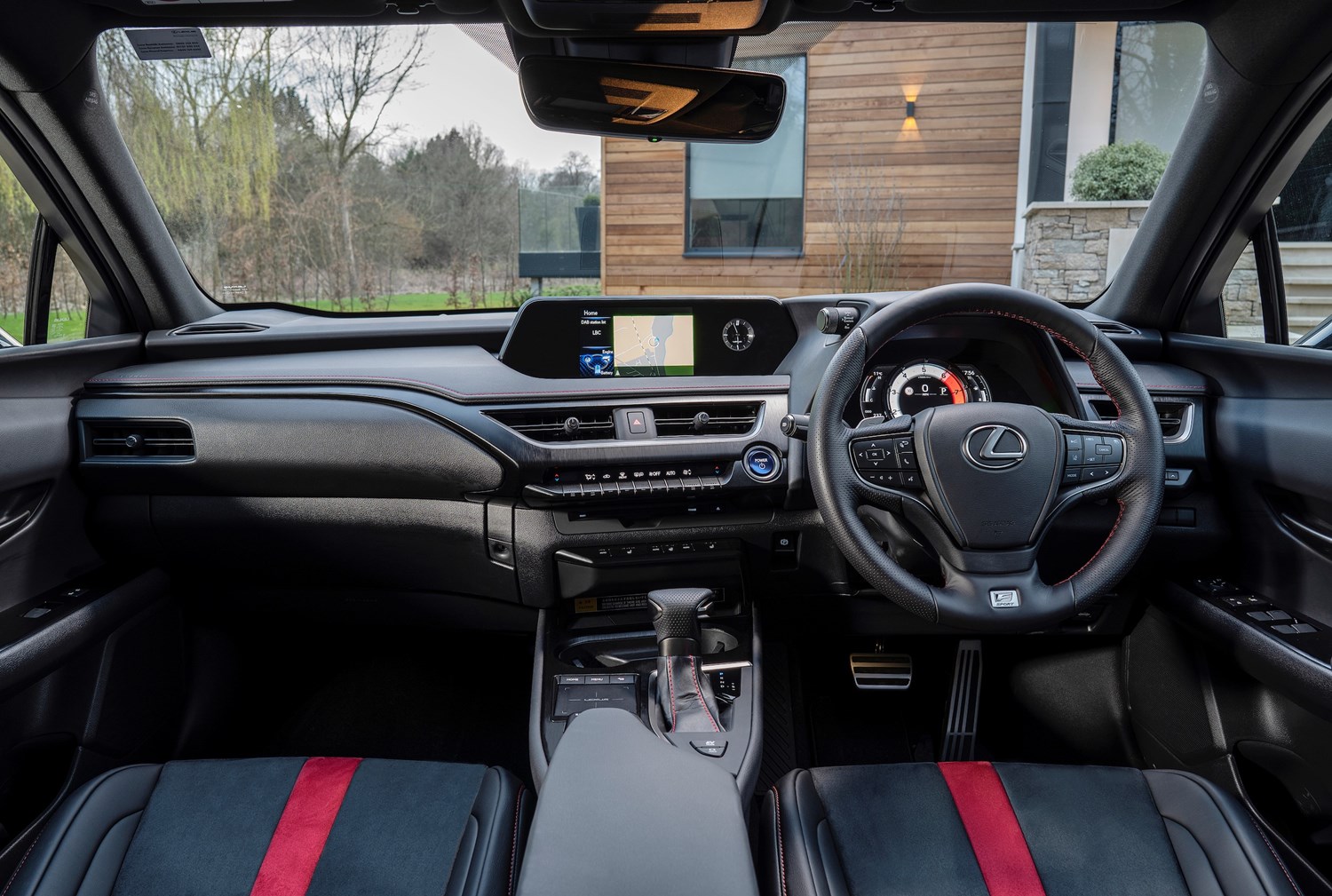Model review
Lexus has become known for two things over the years – SUVs and hybrid models, with both of these now accounting for the majority of its sales. In fact, it’s only in the premium Japanese brand’s performance models that you'll find conventional engines.
So despite the firm already having its RX and NX SUVs, Lexus decided to introduce a third model to its range in the form of the UX. It’s the brand’s smallest crossover to date, and when the CT hatchback falls from production, will be the entry point to the Lexus range.
Previewed by a 2016 concept, Lexus pulled the wraps off its UX crossover at the 2018 Geneva Motor Show – showcasing a bold new design and being the first model from the firm to sit on a new platform known as GA-C (Global Architecture – Compact), which is shared with sister brand Toyota. First models would arrive in the UK in 2019, with the model helping Lexus to record new sales records within the UK.
Latest model
Despite only being around for a short period of time, the UX would receive big updates for 2021. The key addition is the difference of a new electric model – the UX 300e. It’s the brand’s first production EV, boasting a 196-mile electric range from its 54.3kWh battery and 150kW electric motor.
Other changes for 2021 include a new Premium Sport Edition grade, which features a black styling kit on the exterior and additional safety kit in the form of blind spot monitoring and rear cross traffic alert.
Value for money
Prices for the UX kick off from just under £30,000, which makes the UX decent value for money compared to rivals, though is more expensive than the Volvo XC40. Standard equipment is also reasonable, and includes 17-inch alloy wheels, LED headlights and a suite of safety kit. As you go up the trims, though, the prices rise significantly, while you’ll need to spend a significant £38,000 if you want a four-wheel-drive model. The new electric model also costs £40,900, too, which most certainly isn’t cheap.
Despite the UX only arriving in dealerships in 2019, though, used models are already available at noticeable discounts. Prices start from around £24,000, which will buy a one-year-old car with around 10,000 miles on the clock.
Looks and image
Lexus design has certainly taken a brave pill in recent years when it comes to its design, and the UX is arguably one of the brand’s boldest creations in modern times. Featuring a particularly angular design, huge front grille and LED rear light bar, this crossover certainly stands out from the crowd. You might argue the design is a bit over the top, with the oddly-shaped wheel arch surrounds giving it a particularly unusual look, but Lexus should still be applauded for doing things a little differently.
The interior is a touch more conservative, with the familiar Lexus design featuring. There are quite a lot of buttons to contend with by modern standards, and the infotainment system doesn’t work as well as rivals – and the touchpad you operate it with is fiddly – though it’s smart, clean and feels reassuringly upmarket and built to last. Apple CarPlay and Android Auto are also both included as a recent addition to the UX.
The UX also delivers behind the wheel, as with a low-slung seating position compared to some rivals, it feels more like a hatchback to drive than it does an SUV. It’s grippy, has accurate steering and doesn’t lean through the corners in the same way you expect. Yet it continues to remain comfortable, with one of the few gripes being that the engine can be quite vocal, namely due to the CVT automatic gearbox utilised. The electric model also impresses, too, while not having the same engine refinement issues due to its silent electric motor.
Space and practicality
But there’s one quite significant issue with the UX and that’s practicality. With compact dimensions and a chunky electrified powertrain, it falls short of rivals when it comes to spaciousness.
At just 320 litres, the UX’s boot is significantly smaller than rivals, while if you have four-wheel-drive fitted, it reduces to just 283 litres. The back seats fold 60:40 to increase practicality, but it’s still well behind the competition.
Rear space is better, though, as despite a sloping roofline, headroom and kneeroom should be plentiful for adults, though narrow back windows mean it can feel a bit dark.
Engines
If you choose the standard UX model, there’s just one powertrain to choose from – a 2.0-litre petrol-electric hybrid setup, known as the UX 250h. It produces 181bhp in total, with power being delivered to the front wheels in standard form, though an E-Four all-wheel-drive is offered on selected trims. A CVT automatic gearbox is used on both. As for performance, 0-60mph takes 8.3 seconds, and flat out it will reach 110mph.
Then there is the new UX 300e – the brand’s first electric model. Combining a 150kW electric motor with a 54kWh battery, it produces 201bhp, with 0-60mph taking 7.3 seconds (a second quicker than the hybrid model), and having a top speed of 100mph. It boasts a range of 196 miles on the smaller 17-inch wheels and 190 miles on the larger 18s.
Running costs
With only electrified powertrains to choose from, the UX will be an affordable model to run. While you’ll pay significantly more to buy the EV in the first place, it will be noticeably cheaper on the wallet over the course of ownership, with no road tax and congestion charges to pay, while charging costs will be very affordable. The range might not be as long as rivals like the Kia e-Niro, but should be plenty for most drivers. It can also be rapid charged in 50 minutes, while plugging it in at home with a dedicated wallbox will take eight hours and 15 minutes.
If you’d rather stick with the hybrid, it should still be efficient. Lexus claims it will return 53.3mpg (47.1mpg on four-wheel-drive models), along with CO2 emissions as low as 120g/km.
Things to look out for
While the UX is still a new model, Lexus has a superb reliability record for its range of models, and there should be few concerns when it comes to dependability. The brand’s network of dealers also often come out on top of consumer surveys, too.
Rivals
The Lexus UX is pitched against premium crossovers such as the Audi Q3, BMW X2, Jaguar E-Pace, Mercedes GLA and Volvo XC40, though if you’re considering it in relation to other hybrid models, consider the Kia Niro or Toyota’s C-HR, which shares a powertrain with the UX.
As for the electric UX 300e, EVs in this class are still few and far between, but take a look at the Hyundai Kona Electric and Kia e-Niro.
Depreciation
Electrified models typically don’t depreciate heavily and the UX should hold on to its value well if other models from the brand are anything to go on. Welcome savings are still available on nearly-new models, though.





